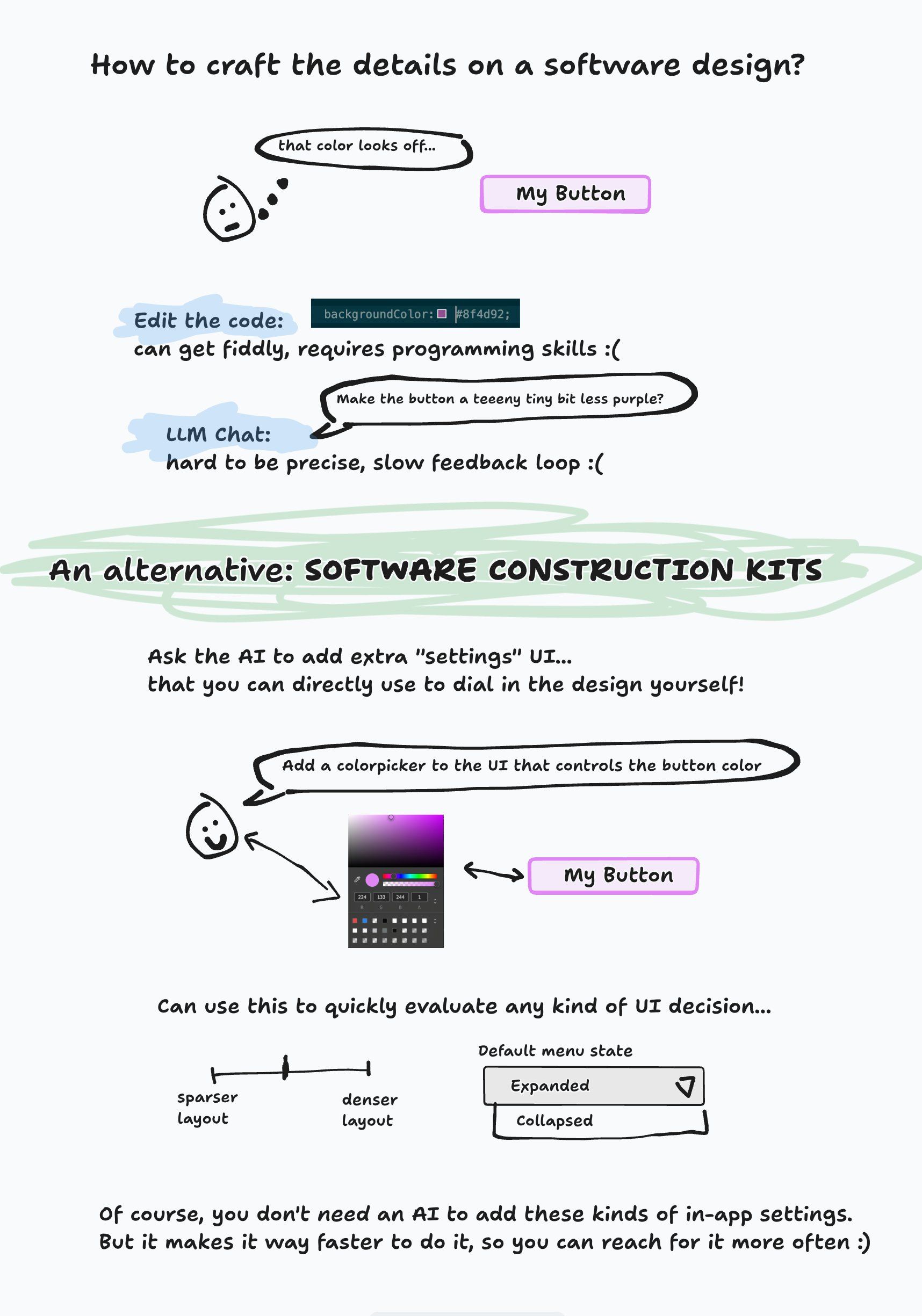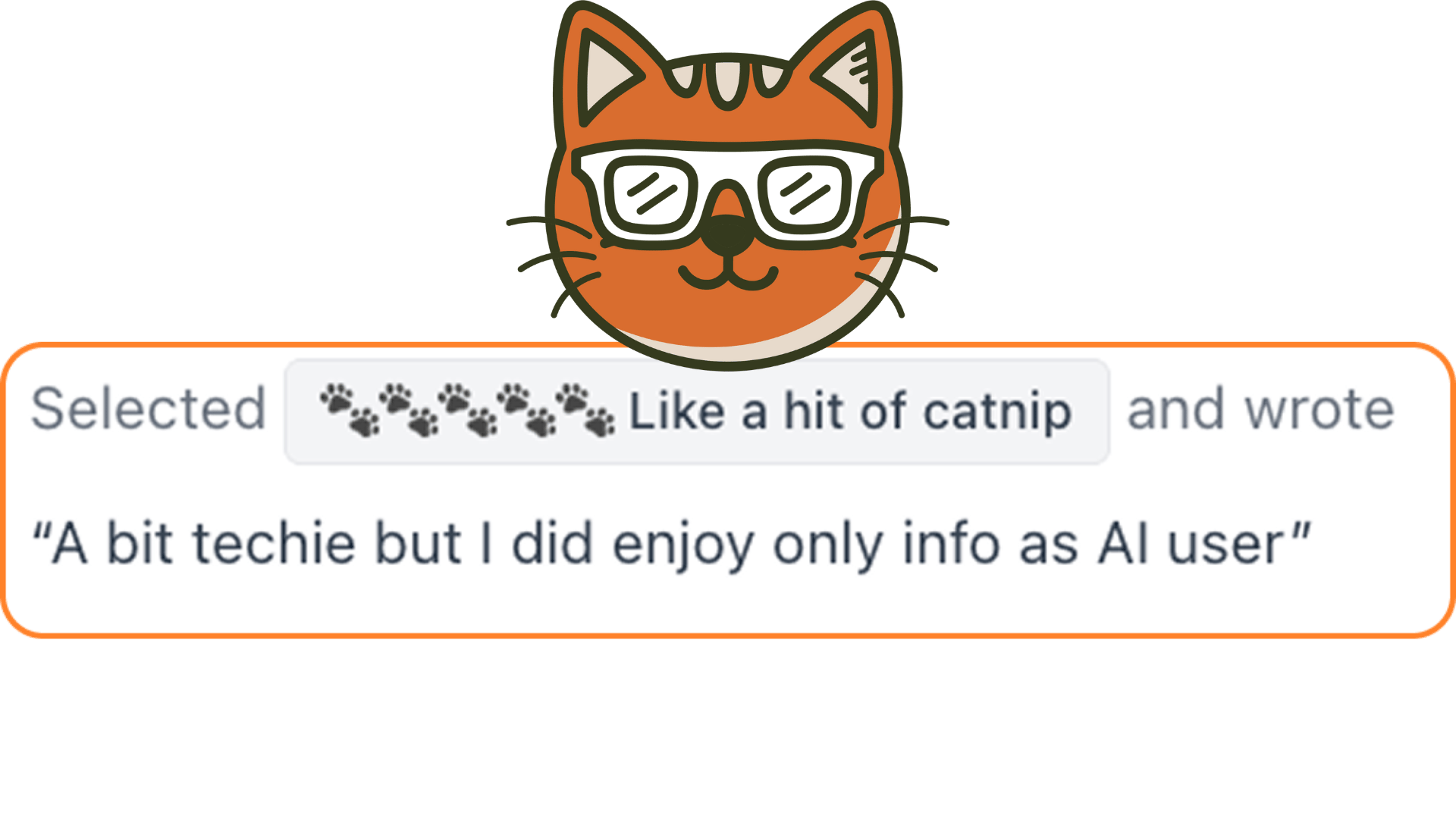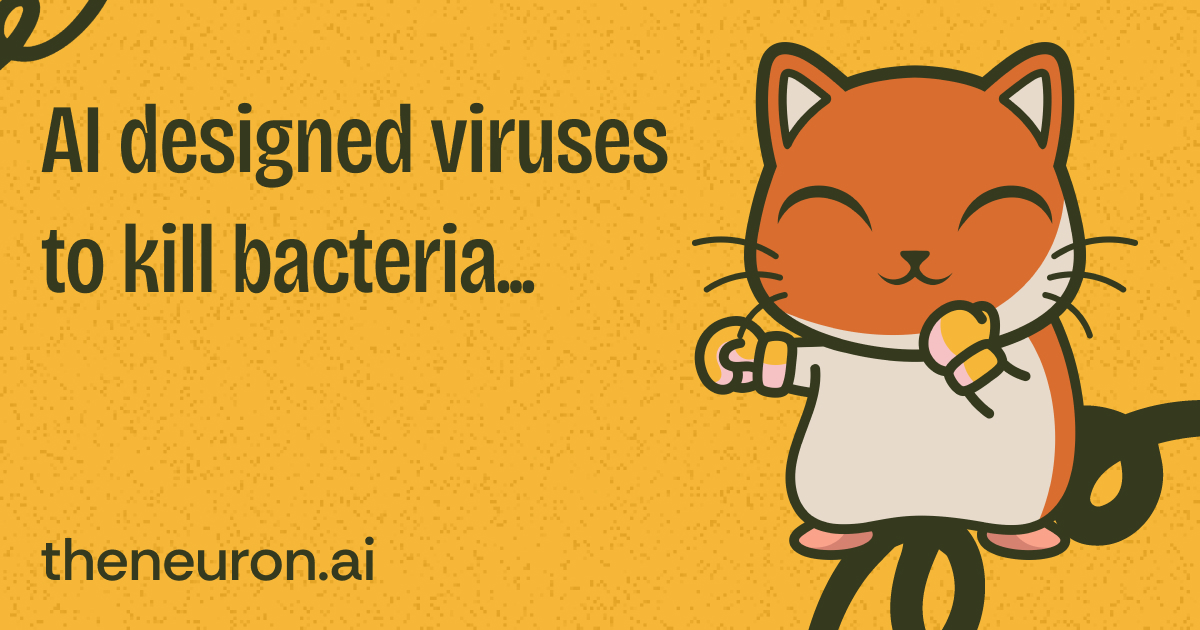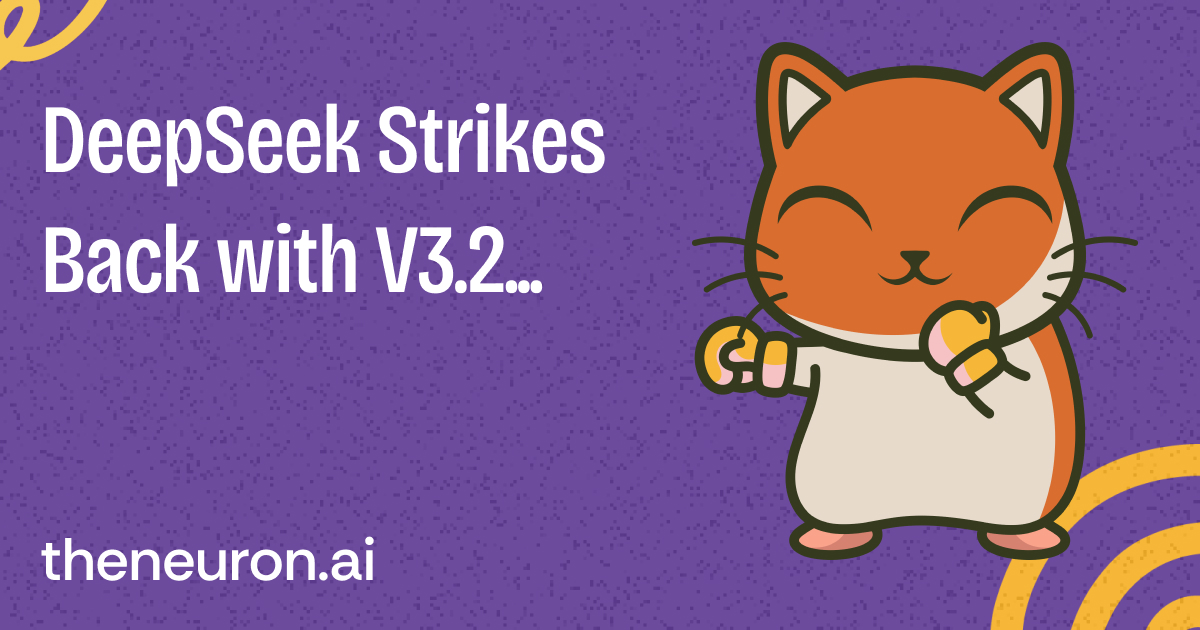Welcome, humans.
Can y’all help us out with something? If you're leading AI or digital transformation at a large industrial company, our parent company TechnologyAdvice and StudioAI want to hear from you.
This new survey is measuring progress, priorities, and barriers in large-scale industrial AI adoption, asking operations leaders and executives how they're actually implementing AI, not just the hype.
Why it matters: Your input helps paint the clearest picture yet of where industrial AI maturity stands in 2025. What's working? What's stuck? Where are the budget dollars and strategic bets actually going?
The survey takes 7–9 minutes. All responses are confidential and aggregated. Plus, you'll be entered to win one of two $100 gift cards.
Here’s what happened in AI today:
- Stanford used AI to design viruses that successfully killed bacteria.
- Sam Altman announced new adult content access for verified users.
- Walmart partnered with OpenAI for in-ChatGPT shopping.
- Oracle's Ellison shared his AI datacenter automation vision.

AI Just Designed Viruses That Kill Bacteria… And They Actually Work…
Stanford scientists just crossed a wild milestone: they used AI to design viruses from scratch that can kill bacteria. This is not theoretical code, but actual working viruses that replicate and destroy bacterial cells. And before you ask, no, they did not “vibe code” the viruses.
Here’s what they did: The team created 302 virus designs using AI, and 16 of them successfully infected E. coli bacteria in the lab. One night, researchers saw plaques of dead bacteria in their petri dishes.
Here's how they did it:
- The researchers trained an AI model called Evo on the genomes of about 2M bacteriophages (viruses that specifically attack bacteria).
- Think of it like training ChatGPT, but instead of feeding it blog posts, they fed it genetic code. The AI learned the patterns of viral DNA and proposed completely new genetic sequences.
- The team then chemically printed 302 of these AI-proposed genomes as actual DNA strands and mixed them with bacteria.
- When 16 of those designs worked (replicating, bursting through bacteria, and killing them) they knew they'd achieved something extraordinary.
Why this matters right now:
- The WHO just reported that 1 in 6 bacterial infections worldwide are now resistant to antibiotics.
- Over 40% of common antibiotics showed increased resistance between 2018 and 2023.
- In some regions, more than 70% of E. coli infections resist first-choice treatments.
Not only that, but traditional antibiotic development takes years and costs billions. Bacteria evolves resistance faster than we can develop new drugs. But AI can design and test hundreds of viral treatments in the time it used to take to test one.
The practical applications are already here. Doctors sometimes use “phage therapy“ to treat serious bacterial infections when antibiotics fail. AI-designed viruses could make these treatments more effective and faster to develop.
The bigger picture: AI robotic labs are now being built specifically to accelerate this kind of research. Liverpool just opened a £20M facility with state-of-the-art robotics to safely develop treatments for deadly infectious diseases.
Safety concerns remain, of course. The Stanford team deliberately avoided teaching their AI about human viruses. But the technology exists, and as one scientist put it: “If someone did this with smallpox or anthrax, I would have grave concerns.“
For now, this breakthrough offers hope against a growing crisis. Antibiotic resistance kills millions annually, and threatens to reverse decades of medical progress by making common infections untreatable, so AI might have just given us a powerful new weapon in that fight.

FROM OUR PARTNERS
You’re not lazy. Your tools are slow.

You spend your life typing — emails, notes, plans, ideas — translating thoughts into words with a machine designed in the 1800s. It’s no wonder your brain feels like it’s moving faster than your hands.
Wispr Flow fixes that. It’s a voice-powered writing tool that turns your thoughts into clean, structured text anywhere you work — Slack, Notion, Gmail, whatever. It’s as fast as talking, but as polished as writing.
You’ll write 4x faster, think more clearly, and finally catch up to yourself. Flow adapts to your tone, edits as you speak (“5pm—actually, make it 6”), and keeps your focus on what matters instead of what key to hit next.
Typing is a habit. Flow is an upgrade.
Try Wispr Flow — speak your thoughts into reality.

Prompt Tip of the Day
Geoffrey Litt shared this graphic about “software construction kits”, a brilliant pattern for working with AI that solves a common frustration.

When you're working with AI to build something (like a simulation, calculator, or interactive tool), you often want to tweak small details. You have two bad options:
- Edit the code yourself - fiddly, requires programming skills.
- Keep chatting with the AI - slow feedback loop, hard to be precise (“make the button a teeny tiny bit less purple?”).
The Solution = ask AI to build controls. Instead of iterating through chat, ask the AI to add settings/controls directly into the interface so you can adjust things yourself in real-time.
After the AI builds your initial version, try prompts like:
- “Add sliders to control the [speed/size/color/spacing].”
- “Add a color picker that controls the button color.”
- “Add a dropdown menu to switch between [expanded/collapsed] states.”
- “Add controls for all the key parameters so I can tune them directly.”
Real example from Geoffrey Litt: He had Claude build an n-body simulation, then said: “Add sliders so I can tune the parameters directly via UI on my phone.“ Now he can experiment with different values instantly instead of regenerating the whole artifact each time.
P.S: Geoffrey says this was inspired by the legendary story of how Chris Espinosa solved Steve Jobs's endless calculator design rejections by building a version with menus that controlled all parameters, letting Steve dial in the Mac calculator himself in 10 minutes.

Treats to Try
- Flint automatically generates on-brand landing pages on your website, so when a competitor launches, it creates a comparison page; when a healthcare exec visits, it shows them healthcare case studies (raised $5M).
- Mantic forecasts major global events like election outcomes and geopolitical shifts, recently placing 8th out of 550 professional forecasters in a tournament.
- n8n’s new Workflow Builder creates automations from natural language: type “send a Slack message when I get an email from my boss“ and it generates the complete workflow with nodes and logic that you can refine and deploy—free trial (20 prompts), then Starter plan (50 prompts) or Pro (150 prompts).
- Poke texts you (via iMessage/WhatsApp) when emails need replies or meetings are coming up without the need for an app.
- TimeFly automatically tracks which projects, languages, and files you're working on in your IDE, showing you heatmaps of when you're most productive, how often you get interrupted, and daily summaries for standups.
- Flow Engineering connects your design tools to your requirements for automatic verification; just update a parameter in your CAD software and Flow instantly checks if you're still meeting requirements, catching problems weeks before design review instead of months of rework (raised $23M)—paid only rn, ~$1K/month for teams.
- DeepWiki turns any GitHub repository into conversational documentation you can ask questions about, automatically keeping answers up-to-date as the code changes.
- Untitled.new names your startup in 5 minutes: answer 10 questions, get naming options, create polls to decide, and helps you decide instead of throwing words on a whiteboard until everyone's exhausted.

Around the Horn

This has basically been true since June (if not January TBH) with the exception of GPT OSS.
- Sam Altman says OpenAI will roll out a new version of ChatGPT “in a few weeks” with more personality like 4o, and after rolling out their “age-gating” tech in December, they’ll allow “verified adults” to prompt adult-specific content.
- Anthropic shared nine economic policy ideas for policymakers to prepare for AI's workforce impact, including 1. workforce training grants, 2. tax reforms for worker retention, 3. closing corporate tax loopholes, 4. accelerating AI infrastructure permits, 5. establishing automation adjustment assistance for displaced workers, 6. implementing taxes on AI compute or tokens, 7. creating sovereign wealth funds with stakes in AI companies, 8. adopting value-added taxes, and 9. implementing business wealth taxes to account for AI's growing economic share.
- OpenAI assembled an eight-person Expert Council on Well-Being and AI with researchers specializing in psychology, psychiatry, and human-computer interaction to advise on building healthier ChatGPT and Sora experiences.
- Walmart and OpenAI partnered so shoppers can buy products directly in ChatGPT.
- Oracle CEO Larry Ellison gave his vision for how the datacenters he’s building will impact the world, arguing that AI's real value is securely reasoning on private corporate data to create AI agents that automate entire business ecosystems, from hospitals connecting to banks for automatic financing to AI-designed crops that pull nitrogen from the air; here’s our summary of the talk.

FROM OUR PARTNERS
Clutch Report: To Crawl or Not to Crawl?

AI crawlers are like nosy neighbors: always peeking, sometimes helpful, sometimes not. Clutch surveyed 320 small business leaders to get their reactions, finding:
- 72% of businesses are worried about them.
- 71% are hit by bot traffic; 42% cite bandwidth issues.
- But 62% say AI search has been a net positive.
- With 60% reporting more revenue, 44% more leads, and 42% more traffic.
- However, 57% block AI crawlers entirely.
So, crawlers…digital pests or secret growth hack? Either way, they’re here to stay—just make sure they’re working for you, not against you.
Dive into the full Clutch report

Midweek Model
Qwen3-VL is the new “local” sized model from Alibaba, which reads images and videos like you read text, so you can ask it about any photo, extract info from receipts, or turn screenshots into working code.
What Makes Qwen3-VL Unique:
Runs Entirely on Your Computer: Unlike ChatGPT or Claude, Qwen3-VL runs locally with complete privacy and no API cost. The compact 4B (~3GB) and 8B (~6GB) models fit on most modern computers (use via LM Studio; link below).
Exceptional Multimodal Understanding: Despite their small size, these models punch above their weight:
- Visual Agent Capabilities: Can actually control your PC or mobile interface by recognizing UI elements.
- Advanced OCR: Reads text in 32 languages (up from 10 in previous versions), even handles blurry images, tilted photos, and rare characters.
- Video Understanding: Processes hour-long videos with second-level indexing.
- Visual Coding: Generates working HTML/CSS/JavaScript or Draw.io diagrams directly from screenshots.
- 3D Spatial Reasoning: Understands object positions, viewpoints, and occlusions.
Mac-Optimized: MLX support means these models run efficiently on Apple Silicon (M1/M2/M3 chips).
Performance: The 8B model often rivals much larger models and even beats Qwen's own 72B flagship from six months ago on many benchmarks.
Try them out here:
Both come in Instruct and Thinking variants for different use cases.

A Cat’s Commentary



.jpg)

.jpg)










